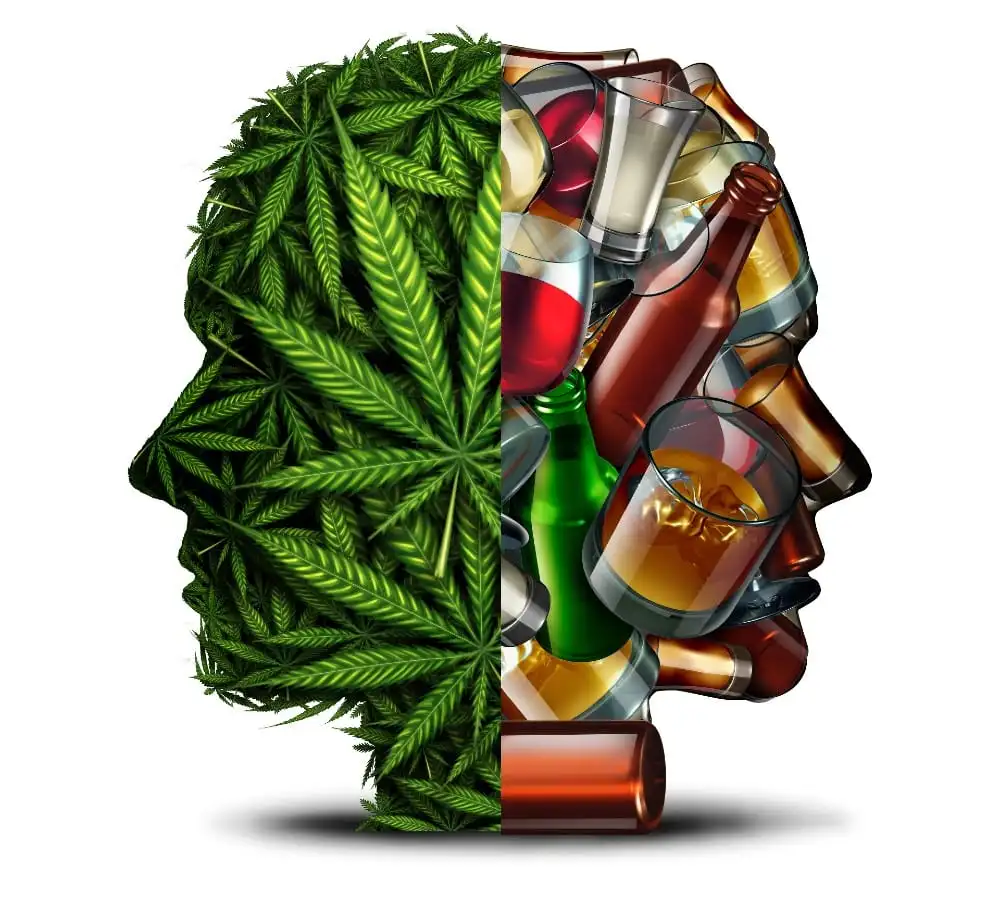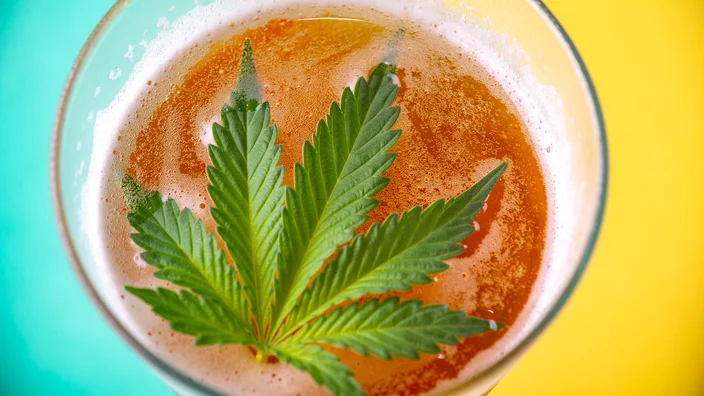The changing cultural and legal dynamics surrounding cannabis in Canada have ushered in a new era of exploration and discussion regarding its use. In this evolving landscape, the combination of marijuana and alcohol has become a subject that requires careful consideration. This article aims to provide a thorough examination of the intricate interplay between these two substances, delving into the nuanced effects that arise when they are used together.
In recent times, with the increasing societal acceptance and legal acknowledgment of cannabis, individuals are more frequently experimenting with combinations of substances, particularly marijuana and alcohol. While this intersection offers new experiences for many, it is crucial to acknowledge the potential risks and consequences. Therefore, gaining a deeper understanding of the combined effects is imperative. It goes beyond mere recreational curiosity, holding profound implications for personal well-being, public safety, and the responsible integration of cannabis into one’s lifestyle.
As we navigate this unfamiliar territory of co-consumption, it is essential to recognize the necessity for informed decision-making. The interactions between marijuana and alcohol can be intricate, affecting both the mind and body in ways that individuals may not anticipate. This article aims to unravel these complexities, providing insights into the science behind the combination, the resulting impairment, and the potential dangers associated with mixing marijuana and alcohol. By shedding light on these aspects, we hope to empower readers with the knowledge needed to make conscious choices, fostering a culture of responsible consumption amidst the dynamic changes in Canada’s cannabis landscape.
The Science Behind Mixing Cannabis and Alcohol
Comprehending the intricacies of how THC interacts with alcohol in the human body is crucial for understanding the outcomes of their combined consumption. THC and alcohol operate on distinct neurological pathways, and when introduced concurrently, their effects can synergistically amplify. THC primarily affects the endocannabinoid system, heightening sensations and altering perception, while alcohol influences the central nervous system, inducing relaxation and impaired coordination.
This interaction between THC and alcohol holds significant implications for cognitive functions and levels of impairment. The combined effects can result in heightened disorientation, compromised motor skills, and a perceptual distortion that surpasses the cumulative impact of each substance individually. The intricate interplay between these two compounds creates a distinctive physiological experience, varying among individuals but generally intensifying the impairment associated with each substance on its own.
Exploring the potential risks linked to mixing cannabis and alcohol reveals a multifaceted landscape. Beyond the immediate concerns of impaired judgment and coordination, simultaneous consumption may elevate the likelihood of adverse reactions. These risks encompass, among other things, heightened drowsiness, an increased heart rate, and exacerbated feelings of anxiety or paranoia. Additionally, the combination has been associated with a greater incidence of accidents and injuries, underscoring the importance of recognizing the potential dangers tied to concurrent use. As we navigate the intricate chemistry of the interaction between cannabis and alcohol, a nuanced comprehension of these scientific foundations is essential for individuals to make informed decisions regarding their consumption habits.
How Impairment Works
Delving into the repercussions of blending cannabis and alcohol necessitates a closer examination of how this amalgamation impacts crucial facets of human function, especially motor skills and coordination. Both marijuana and alcohol independently contribute to impairments in these areas, and when used simultaneously, their collective effect can be significantly heightened. Users frequently report a noticeable decline in both fine and gross motor skills, elevating the risk of accidents and injuries.
Impairment doesn’t solely manifest physically; it extends into the cognitive realm, influencing decision-making processes. The intertwined effects of THC and alcohol on cognitive functions can lead to compromised judgment, diminished inhibitions, and a skewed perception of risk. Consequently, individuals may make choices they would typically avoid, contributing to potentially perilous situations. Recognizing the potential consequences of impaired decision-making is crucial for users to navigate the delicate balance between recreational enjoyment and responsible consumption.
Moreover, the legal landscape surrounding impaired driving becomes prominent when considering the combined effects of cannabis and alcohol. In Canada, stringent regulations govern impaired driving, covering both substances. Law enforcement agencies employ various tools, such as roadside sobriety tests and drug recognition evaluations, to detect and penalize individuals operating a vehicle under the influence. As cannabis becomes more prevalent in everyday life, understanding the legal ramifications associated with impaired driving due to the simultaneous use of cannabis and alcohol becomes paramount. This knowledge serves not only to shield individuals from legal consequences but also to foster a heightened sense of responsibility within the broader community.
The Combined Effects of Cannabis and Alcohol

Diving into the combined effects of mixing weed and alcohol unveils a complex interplay on the central nervous system, where the synergy between THC and alcohol results in a unique physiological experience. The simultaneous presence of these substances can lead to an amplification of effects, creating a heightened state of relaxation, euphoria, and altered sensory perception. This synergy extends beyond what one might expect from the individual use of each substance, making it crucial for users to comprehend the distinctive impact of their co-consumption.
This heightened state of euphoria, however, comes at the cost of increased impairment and potential dangers. The amalgamation of THC and alcohol intensifies cognitive deficits, impacting attention, memory, and reaction time. Users may find themselves more susceptible to accidents, misjudgments, and a general lack of situational awareness. As the line between recreational use and potential hazards becomes blurred, individuals must be cognizant of the augmented risks associated with combining these substances.
To underscore the real-world implications, exploring case studies and real-life examples becomes instrumental in illustrating the risks of mixing weed and alcohol. These narratives provide tangible insights into scenarios where co-consumption led to adverse outcomes, be it in the form of accidents, medical emergencies, or legal consequences. Examining these cases offers a sobering perspective on the potential pitfalls associated with this practice, serving as cautionary tales for those who might underestimate the gravity of combining these substances. By drawing from actual experiences, this discussion aims to bridge the gap between theoretical knowledge and the tangible consequences individuals may face when navigating the intricate terrain of mixing weed and alcohol.
Is it Safe?
The question of whether it is safe to mix weed and alcohol draws upon a spectrum of expert opinions that contribute to a nuanced understanding of the practice. While some experts acknowledge that moderate co-consumption may not pose significant risks for certain individuals, others emphasize the potential dangers associated with the combined effects of THC and alcohol. Striking a balance between these perspectives is essential for individuals seeking clarity on the safety of such practices.
Factors influencing individual reactions play a pivotal role in determining the safety of mixing weed and alcohol. Variables such as tolerance levels, pre-existing health conditions, and individual susceptibility to the effects of THC and alcohol can vary widely. What might be a tolerable combination for one person could lead to adverse reactions in another. Recognizing these diverse factors underscores the importance of personalized decision-making, where users must be attuned to their own bodies and responses to make informed choices about co-consumption.
In light of the varying opinions and individual factors, establishing responsible consumption guidelines emerges as a critical component of navigating the safety considerations associated with mixing weed and alcohol. These guidelines may include setting limits on the quantity of each substance consumed, allowing adequate time between consumption, and opting for lower-THC strains. Furthermore, exploring alternative methods of consumption, such as edibles, offers individuals an opportunity to mitigate potential risks while still partaking in the combined experience. By amalgamating expert insights, understanding individual nuances, and adhering to responsible consumption guidelines, individuals can strive to strike a balance that prioritizes safety while engaging in the evolving landscape of cannabis consumption in Canada.
Recognizing Signs of Alcohol Poisoning

An integral aspect of understanding the risks associated with mixing weed and alcohol involves a keen awareness of the signs and symptoms of alcohol poisoning. Excessive alcohol consumption can lead to a severe medical emergency marked by a range of symptoms, including confusion, vomiting, seizures, slow or irregular breathing, and unconsciousness. Recognizing these indicators is crucial for individuals engaging in co-consumption, as the effects of weed may mask or exacerbate the signs of alcohol poisoning.
The combination of weed and alcohol can create a deceptive scenario where the usual signs of alcohol poisoning may be overshadowed or distorted. The calming effects of cannabis might mask the restlessness or agitation often associated with alcohol poisoning, leading individuals to underestimate the severity of the situation. Conversely, the intensified impairment from mixing these substances can exacerbate the symptoms, making it challenging to discern whether the individual is merely experiencing the effects of co-consumption or is in a state of alcohol poisoning.
In cases where alcohol poisoning is suspected, urgent and decisive actions are imperative. Seeking medical attention immediately is paramount, as alcohol poisoning can be life-threatening. Emergency services should be contacted without delay. While awaiting professional help, efforts to keep the affected individual awake and sitting up, if conscious, can be crucial. If unconscious, placing them in the recovery position to prevent choking on vomit is recommended. The gravity of alcohol poisoning demands a swift and informed response, underscoring the importance of being vigilant when navigating the complexities of mixing weed and alcohol.
The Impact of Cannabis and Alcohol on Mental Health
Delving into the intersection of mental health and the combination of weed and alcohol reveals a nuanced landscape that merits careful consideration. The potential effects on mental health when these substances are mixed can vary widely among individuals. For some, the combination may heighten feelings of relaxation and euphoria, while for others, it may pose a risk of exacerbating existing mental health conditions.
Of particular concern is the risk of intensifying anxiety, depression, or other mental health conditions. Both cannabis and alcohol have known impacts on mood, and when used concurrently, they can interact in ways that amplify these effects. For individuals with pre-existing mental health concerns, the co-consumption of weed and alcohol requires thoughtful reflection and a keen understanding of personal triggers.
Responsible use becomes especially crucial for those with a history of mental health issues. While some individuals may find temporary relief in the calming effects of cannabis or the social lubrication associated with alcohol, it is essential to recognize the potential long-term implications. Establishing clear boundaries, seeking guidance from mental health professionals, and monitoring one’s emotional well-being are integral components of responsible use in the context of mental health. As we navigate the landscape of mixing weed and alcohol, prioritizing mental well-being and fostering an open dialogue about its intersection with substance use are essential for a holistic understanding of the potential impacts on mental health.
Social and Peer Pressure

The interplay between social dynamics and the co-consumption of weed and alcohol introduces a dimension that significantly shapes individual choices and behaviours. Analysis of this relationship reveals that social settings often play a pivotal role in the decision to mix these substances. Peer influence, whether direct or indirect, can impact the willingness of individuals to engage in co-consumption scenarios. The desire to fit in, socialize, or conform to group norms may drive individuals to experiment with mixing weed and alcohol, sometimes without fully considering the potential risks involved.
External factors, such as the normalization of co-consumption in certain social circles or the portrayal of such practices in media and popular culture, can contribute to shaping perceptions and behaviours. Understanding these external influences is crucial for individuals seeking to make informed decisions in social settings where the co-consumption of weed and alcohol may be prevalent.
To navigate these social dynamics responsibly, individuals need strategies for making independent and informed decisions. This involves cultivating a heightened awareness of personal boundaries, values, and health considerations. Communicating openly with peers about one’s choices and limits, as well as being receptive to diverse perspectives, can foster a supportive social environment that respects individual decisions.
Additionally, promoting education and awareness within social circles can contribute to a culture of responsible consumption, empowering individuals to make choices aligned with their well-being rather than succumbing to external pressures. As we explore the role of social and peer influence in the context of mixing weed and alcohol, it becomes evident that fostering a sense of autonomy and mindfulness is integral to making choices that prioritize individual health and safety.
Tips for Safer Consumption
Navigating the landscape of mixing weed and alcohol involves adopting strategies for safer consumption that prioritize well-being. One key consideration is the recommended spacing between consuming weed and alcohol. Allowing sufficient time between the ingestion of these substances can help mitigate the risk of heightened impairment. Establishing a staggered approach allows individuals to gauge the effects of each substance independently, fostering a more controlled and predictable experience.
Choosing lower-THC strains when opting for co-consumption is another prudent measure to enhance safety. Lower-THC strains mitigate the risk of intensified impairment, providing individuals with a more manageable and controlled experience. By being selective in strain choices, users can tailor their co-consumption to align with their tolerance levels and personal preferences, striking a balance that minimizes potential adverse effects.
Considering alternatives to smoking, such as edibles, emerges as a valuable strategy to further mitigate risks associated with mixing weed and alcohol. Edibles provide a method of consumption that avoids the respiratory implications of smoking while delivering a more gradual onset of effects. This slower onset allows users to gauge their tolerance and adjust their consumption accordingly, reducing the likelihood of overindulgence and the associated risks.
These tips for safer consumption underscore the importance of mindfulness and intentionality when exploring the combination of weed and alcohol. By spacing out consumption, choosing appropriate strains, and considering alternative methods, individuals can enhance their ability to navigate the potential pitfalls associated with co-consumption, contributing to a more informed and responsible approach within the evolving landscape of cannabis use in Canada.
Conclusion
In wrapping up this exploration into the intricate dynamics of combining cannabis and alcohol, a synthesis of key points emerges, highlighting the crucial role of informed decision-making within the Canadian cannabis landscape. The blend of THC and alcohol results in a distinctive physiological experience, escalating impairment and potentially increasing risks associated with simultaneous consumption. The recognition of signs of alcohol poisoning becomes paramount, especially considering that the effects of cannabis may mask or exacerbate these symptoms.
As we navigate the crossroads of recreational exploration and responsible consumption, it becomes clear that expert opinions, individual factors, and adherence to guidelines play crucial roles in determining the safety of combining cannabis and alcohol. The emphasis on opting for lower-THC strains, spacing out consumption, and considering alternative methods such as edibles offers practical insights for individuals seeking a safer co-consumption experience.
In the spirit of cultivating a culture of responsibility and awareness, it is essential to reemphasize the need for conscientious decision-making. Responsible consumption extends beyond individual experiences to impact broader communities. Readers are urged not only to apply the insights gleaned from this exploration in their personal lives but also to disseminate this information within their networks. By actively participating in the sharing of knowledge, we collectively contribute to a safer, more informed cannabis culture in Canada. Moving forward, let our exploration of combining cannabis and alcohol serve as a guide for mindful choices and as a foundation for an ongoing dialogue surrounding responsible cannabis use.








